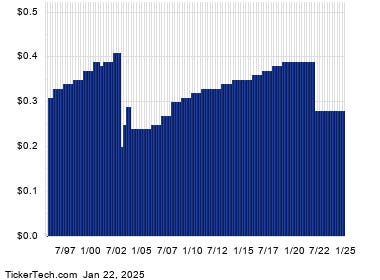In the most recent election, the country overwhelmingly chose a Republican president, Senate, and House of Representatives. There were several reasons for the landslide victory, including out of control spending in Washington and a massive federal debt. Over the years, and especially during the pandemic, the federal government amassed an enormous amount of debt putting significant pressure on succeeding generations. With the new DOGE commission under the Trump administration, we could see a return of fiscal sanity in Washington. However, even if Washington begins to act with fiscal prudency, the enormous debt will take years to pay and in the interim, it could have a negative effect on the U.S. economy. In other words, things could get worse before getting better.
The Negative Effect of Excessive Government Debt on Economy and Society
A rising government debt presents a headwind to economic growth. This was proven in a September 2011 study from the Bank of International Settlements. The BIS is owned by 63 central banks around the world, including our own Federal Reserve. In the BIS paper, entitled, “The Real Effects of Debt,” it states, “At moderate levels, debt improves welfare and enhances growth. But high levels can be damaging.” The BIS research concluded that as government debt exceeds 85% of GDP, economic activity becomes more muted. The higher this ratio rises, the greater the impact. The paper further states, “…too much debt impairs the government’s ability to deliver essential services to its citizens.” It’s widely accepted that debt is one of the chief building blocks of a prosperous economy. Without debt, a nation’s economy would suffer greatly. Again, some debt is beneficial, but too much is harmful.
U.S. National Debt
The national debt is currently at $35.4 trillion. GDP is slightly under $29.3 trillion. A country’s debt is often measured by its debt-to-GDP ratio. This is calculated by dividing the amount of debt into the country’s GDP. When debt is greater than GDP, the ratio is above 100%. According to usdebtclock.org, America’s debt-to-GDP ratio is 122.87%. To compare, it was 53.33% in 1960, 34.50% in 1980, and 59.46% in the year 2000. In recent decades, the national debt has been rising faster than economic growth (GDP).
America’s debt rose during the financial crisis of 2008 as spending increased and economic activity slowed, leading to less revenue. However, nothing compares to the increase from the recent pandemic. To illustrate, let’s refer to the following chart. From 1974 to 1984, the debt more than tripled. From 1984 to 1994, it nearly tripled again. During the next 10 years, the debt rose by 1.5 times. From 2004 to 2014, it more than doubled. Finally, from 2014 to 2024, it doubled again. Even to the most casual observer, this explosion of debt is unsustainable.
What’s Driving the National Debt?
Debt rises when the government spends more than it collects. When we examine federal spending (see chart below) we find it tends to increase during times of war and during a crisis. For example, during WWII, spending rose to support the war effort. After the war ended, spending returned to pre-war levels. After rising, spending fell again after the 2008 financial crisis. Spending during and after the pandemic tells a very different story. During the first year of the pandemic (2020), spending rose by 50% from the previous fiscal year. It rose another 4.1% in the second year of the pandemic, then fell by 8.0% and 2.2% over the next two fiscal years. Enter fiscal year 2024. Even though the pandemic was officially over, federal spending rose by 10.1% in 2024. According to debtclock.org, federal spending is currently above $7 trillion, and revenue is just under $5 trillion. Thus, the current budget shortfall is a record $2 trillion, which is added to the national debt.
Dealing With the National Debt
How do we get out of such a massive debt? First, we must bring spending in line with revenue. In other words, we need a balanced budget. We must cut spending. Secondly, we need to grow the economy. Strong economic growth means more people are participating in the workforce, which translates into greater tax revenues. Politicians seem unwilling to reduce spending as members of Congress seek to remain in office, which is a strong argument for term limits.
The DOGE is focused on reducing waste and fraud, but there is a concern. If President Trump wants money to advance his agenda, whether for deportations or for AI initiatives, will Musk and the DOGE push back? Will this create a divide between the two? Even if the DOGE is successful in cutting spending, there will likely be a period of adjustment where things get worse before improving.
In the long run, getting a handle on the federal budget and debt will prove beneficial. But there could be a difficult period as the nation adjusts to a leaner, more efficient government. Short term woes? Likely. Long term benefits? Absolutely.
Read the full article here















